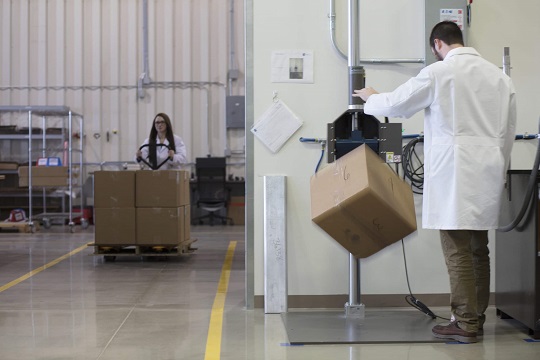

Our Quality Team is celebrating our most recent successful A2LA assessment!
In the realm of medical device packaging, accreditation is everything. With our accreditations and certifications, our clients can be confident in the quality of services provided by Packaging Compliance Labs.
In this blog, we will dive into what it means to be accredited, how an assessment is performed, and then we will explain the scope changes that occurred during the most recent assessment from our accrediting body, A2LA.
What Does Laboratory Accreditation Provide?
Lab accreditation provides a form of recognition of the effectiveness of a lab’s:
- Quality management system and all the policies and procedures associated with it, and
- The specified scope of tests that have been recognized of confidence by the accrediting body to verify the technical competence of the lab.
It is not a requirement of medical device packaging testing labs to have an A2LA accreditation. So, the question is why would we endure the rigorous and time-consuming assessment if it isn’t required? The answer is simple! With our ISO 17025 certification stacked on top of our A2LA scope of accreditation, our clients, and potential clients, have further confidence that the systems we have in place are being managed and performed correctly.
How is an A2LA Assessment Performed?
While all assessors have their own personalities and areas of focus (i.e. training, equipment, procedures), the overall process for conducting an ISO 17025 accreditation assessment typically follows a common path.
The assessment usually takes place with an assessor on site. However, due to COVID-19, the lab’s most recent A2LA assessment was performed virtually. Despite the virtual nature of the assessment, it was conducted as if it were to occur in person. Based on the size of our lab, our assessment typically takes 2 days.
Pre-Assessment
A lab will commonly provide a list of requested documents to their accrediting body prior to their assessment. Doing this gives the assessor time to review the key processes of the lab to gain familiarity with their systems before the assessment. If there are any concerns, this grace period gives them a chance to ask questions in advance, which saves time while the assessor is onsite.
Part One: Review Quality Management System (QMS)
The first day of an assessment is typically spent going through the lab’s QMS. This entails going through processes, procedures, and equipment. The assessor will then review records to provide objective evidence of the lab following those procedures. What they are really looking for is to see if procedures align with what their standard says. Next, they check to see if we are doing those procedures correctly. While reviewing equipment requirements, they will go through our calibration documentation and review our preventative maintenance records.
Day 2: Scope of Accreditation
Once the assessor gets through all the Quality Management steps of the assessment, the next focus is reviewing the test methods listed on the scope of accreditation. This portion of the assessment is the technical competence piece where the A2LA assessor examines our lab technicians performing each test method on our scope being executed.
When the assessor reviews the tests being performed, they will allow us to perform the “worst case” scenario if there are multiple ways the test can be performed. For example, within ASTM D4169 there are many different distribution cycles (DC) and assurance levels (AL). We are not required to perform every single DC, since they share a lot of the same test schedules. Since the Air profile is the most severe vibration profile from the standard, PCL will usually perform that for review.
A2LA Logo Usage Guidelines
PCL’s accrediting body, A2LA, has its own specific guidelines about how we can use their logo in quotes, reports, etc. The main guideline is that we cannot use their logo on a quote if there is a test listed that is not an A2LA accredited test. For example, there is a puncture test that we can provide, but it has not been reviewed by an A2LA assessor, so we are not supposed to use the logo on the quote or report even though we are an accredited lab. Essentially, they’re ensuring that lab clients clearly understand if the tests being performed are accredited or not.
For PCL, onsite assessments occur every 2 years. Between these assessments, the lab undergoes an annual review of its policies and procedures remotely.
PCL Scope Expansion
We are excited to announce that with our most recent assessment, not only did we pass without any findings or opportunities for improvement (yay!), but we also expanded our scope of testing for the first time! We added Gurley porosity (TAPPI T460), barcode grading (ISO 15415/15416, GS1), air permanence (ISO 5636), and a parameter scope for conditioning and transit activities.
A parameter scope allows us to make an accreditation claim based on an operating range for a piece of equipment and having it verified rather than calling out a unique test method. If we are operating within the approved range, we can make a claim of accreditation.
Our parameter scope applies to environmental conditioning, accelerated aging, drop testing, compression testing, and vibration testing.